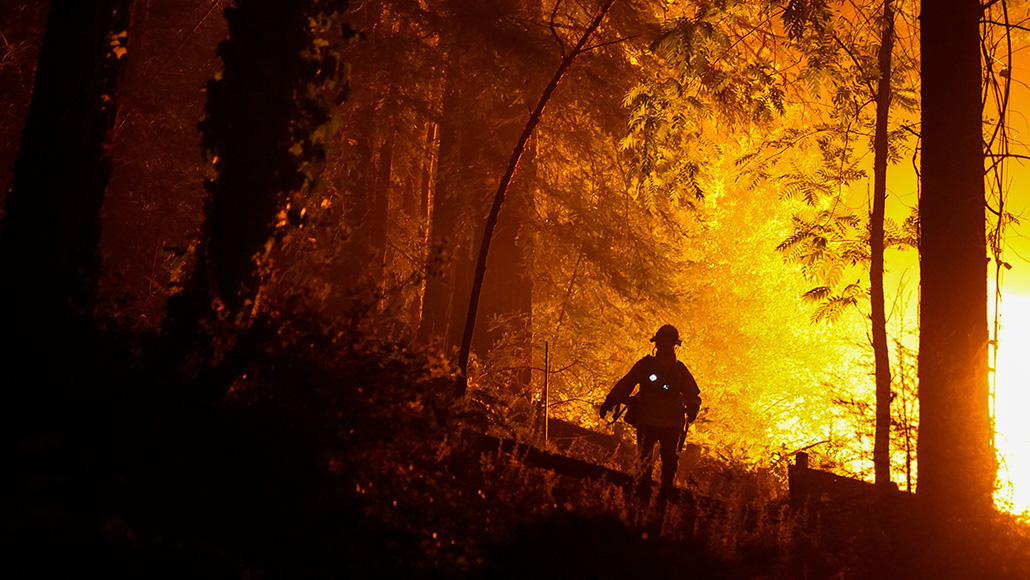Technology and natural hazards clash to create ‘natech’ disasters
The term’s definition is expanding as climate change ramps up hurricanes and wildfires

A firefighter responds to an intense wildfire that burned communities in California’s Santa Cruz mountains in August. The fire melted pipes in the water distribution network, which may have contaminated residents’ drinking water.
Kent Nishimura /Los Angeles Times/Getty Images






